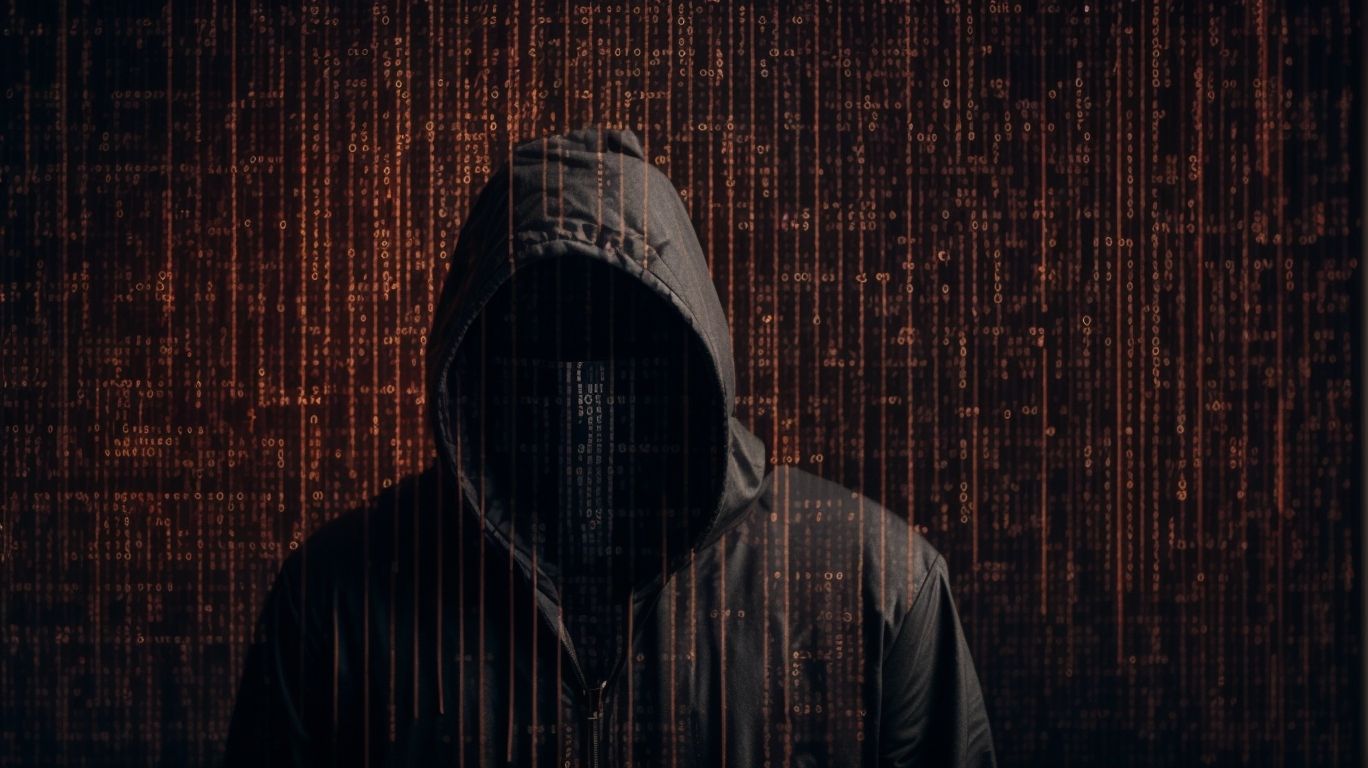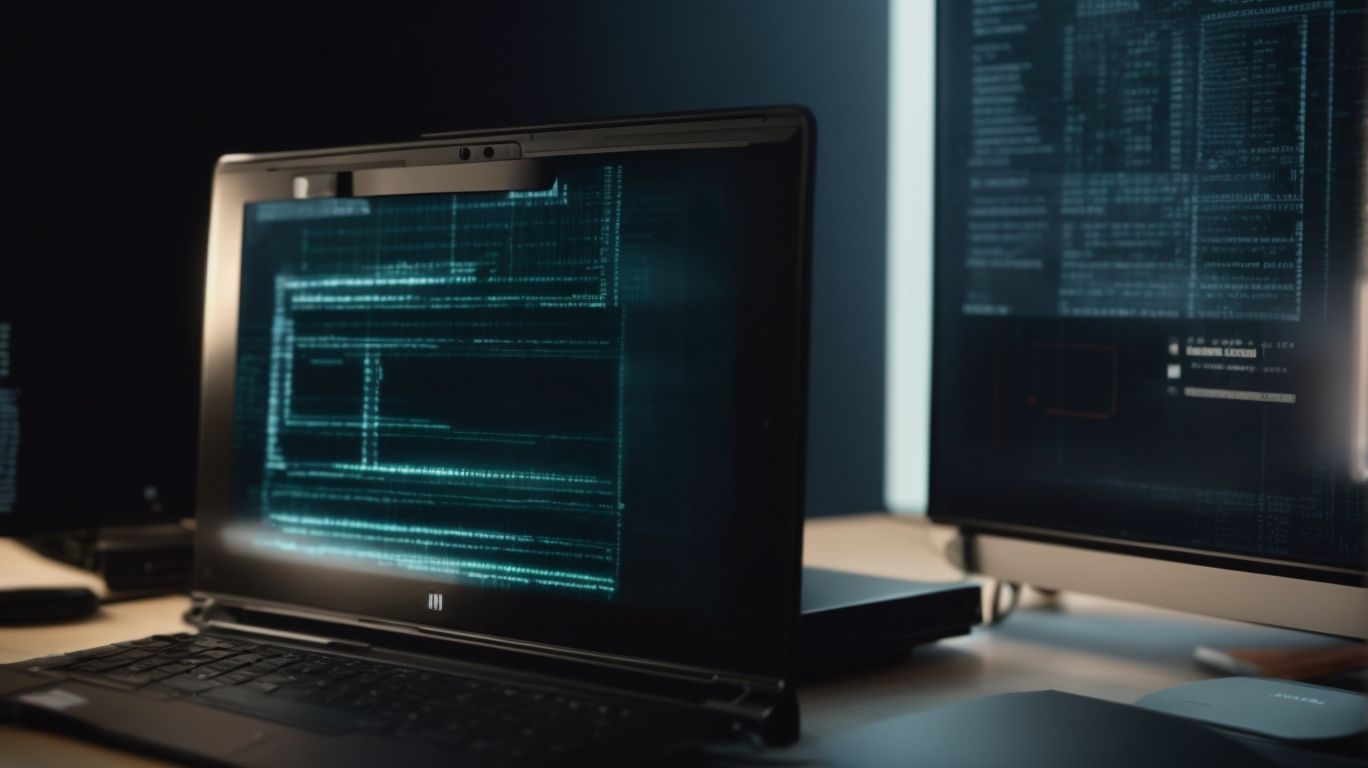Deepfakes have become a growing concern in our digitally-driven world. From altering facial expressions to manipulating voices, these sophisticated AI-generated videos pose serious risks to security and privacy. In this article, we will explore the creation process of deepfakes, the potential dangers they present, and how they are being used for entertainment and political manipulation. We will also discuss the future implications of deepfakes, how individuals can protect themselves, and the efforts being made to combat this emerging threat. Join us as we dive into the world of deepfakes and uncover the measures being taken to address this pressing issue.
Table of Contents
Key Takeaways:
Deepfakes pose a serious threat to both security and privacy, as they can be used to manipulate and deceive individuals and organizations.Individuals can protect themselves from deepfakes by being aware of warning signs and verifying the authenticity of media.Efforts are being made to combat deepfakes through technological solutions and legal and policy measures.
What are Deepfakes?
Deepfakes refer to synthetic media created using artificial intelligence (AI) techniques to manipulate audio-visual content, often leading to realistic but fabricated representations.
Deepfakes leverage sophisticated AI technologies such as deep learning and generative algorithms to craft highly convincing but entirely fictional digital content. The intricate process involves training AI models on extensive datasets to generate synthetic media that can mimic the appearance and behaviors of real individuals. This blend of advanced technology and deception poses significant challenges in distinguishing between genuine and manipulated content, raising concerns about misinformation, privacy breaches, and the erosion of trust in various sectors, including politics and entertainment.
How are Deepfakes Created?
Deepfakes are crafted through sophisticated manipulation techniques that combine audio and visual elements to create convincing but false narratives, challenging the authenticity of digital content.
One of the methods involved in crafting deepfakes is the use of deep learning algorithms, which analyze and synthesize vast amounts of data to imitate a person’s likeness.
The technology behind deepfakes leverages neural networks to map facial expressions and gestures from one source onto another, seamlessly blending them to achieve a realistic outcome.
The computational power required for processing these intricate details plays a crucial role in enhancing the quality of deepfake videos, making them increasingly difficult to distinguish from reality.
What are the Risks and Dangers of Deepfakes?
Deepfakes pose significant risks to cybersecurity and national security, with the potential to deceive organizations and manipulate public perceptions through fabricated multimedia content.
One of the concerning implications of deepfakes is their ability to impersonate high-profile individuals or create convincing fake scenarios, which could be used to spread misinformation and disinformation that fuels social unrest.
This technology also presents a serious challenge for governments, as the use of deepfakes in political contexts can undermine trust in democratic processes and lead to widespread confusion among the public.
Deepfakes can be leveraged for financial fraud, with cybercriminals using manipulated videos or audio to trick individuals or organizations into making financial transactions, resulting in significant monetary losses.
How do Deepfakes Impact Security?
The impact of deepfakes on security is profound, with agencies like the FBI, CISA, and NSA actively engaged in combating the rise of synthetic media threats.
These organizations, at the forefront of cybersecurity, are continually enhancing their techniques to detect and counter deepfakes, which are becoming more sophisticated and convincing. One of the primary challenges faced by these agencies is the rapid evolution of deepfake technology, making it increasingly difficult to distinguish between real and manipulated content.
Information sharing plays a critical role in addressing this challenge, allowing various entities to collaborate and stay ahead of potential threats.
How do Deepfakes Affect Privacy?
Deepfakes have a concerning impact on privacy, as they can be used for identity theft and fabricating false scenarios by replicating individuals’ facial expressions and mannerisms.
These sophisticated technologies can make it increasingly challenging to discern between real and manipulated content, blurring the lines between truth and fiction. Such manipulation raises serious ethical questions regarding consent and the potential misuse of personal data.
One of the significant challenges surrounding audio-visual authorization is the difficulty in verifying the authenticity of media content, leading to a rise in instances of misinformation and fraud.
What are the Current Uses of Deepfakes?
Deepfakes are currently utilized for various purposes, including spreading hoaxes, perpetrating scams, and creating deceptive multimedia content for malicious intents.
These sophisticated manipulated videos have become a common tool in the digital age to mislead individuals, manipulate public opinion, and create false realities.
One alarming trend is the use of deepfakes to fabricate political speeches, rallies, and even news broadcasts, blurring the lines between truth and fiction.
These hyper-realistic fake videos can quickly go viral on social media platforms, further amplifying their impact and reach.
How are Deepfakes Used for Entertainment?
Deepfakes have found a niche in the realm of entertainment, where they are sometimes misused to create illicit celebrity pornography, raising ethical concerns.
The utilization of deepfakes in entertainment extends beyond just creating fake celebrity content. These AI-generated videos, which convincingly depict individuals saying or doing things they never did, have stirred debates on the ethical implications of such advancements. Synthetic media allows for the manipulation of visuals and audio to a point where distinguishing reality from fiction becomes increasingly challenging.
- One major concern is the potential harm to a public figure’s reputation when misinformation spreads through fabricated deepfake videos.
- The issue of consent arises when celebrities find their likeness used without permission in these untruthful portrayals.
- Entertainment industry professionals are grappling with the blurred line between creative expression and deceptive manipulation as they navigate the evolving landscape of synthetic media.
How are Deepfakes Used for Political Manipulation?
Deepfakes are harnessed as tools for political manipulation, enabling actors to orchestrate election manipulation and propagate misinformation through synthesized media content.
These AI-generated videos can feature highly convincing audio and visual elements, making it challenging for the public to distinguish truth from fiction. The rise of deepfakes poses a significant threat to the integrity of electoral processes, as malicious actors can deploy these deceptive techniques to undermine public trust in institutions and sow discord among populations.
What are the Potential Future Uses of Deepfakes?
The future holds potential for deepfakes to be misused in perpetrating fraud schemes, corporate espionage activities, and other nefarious endeavors that exploit synthetic media capabilities.
As deepfake technology continues to evolve, the risks associated with its misuse are becoming increasingly concerning. In the realm of finance, the potential for deepfakes to manipulate stock prices and deceive investors raises alarms about market stability and integrity.
Advanced synthetic media tools can undermine the security of sensitive information, making individuals vulnerable to identity theft and data breaches. The ability to fabricate convincing videos and audio recordings poses a serious threat to personal and corporate security, paving the way for sophisticated cyber attacks that exploit the trust placed in digital media.
Could Deepfakes be Used for Fraud and Scams?
The potential for deepfakes to be leveraged in perpetrating financial fraud, market manipulation, and other fraudulent activities poses significant challenges to cybersecurity and economic stability.
Deepfakes have introduced a new dimension to the ever-evolving landscape of cybercrime, allowing malicious actors to manipulate information with unprecedented realism and sophistication. This has facilitated the spread of misinformation, causing panic and confusion among the public.
In the financial sector, the use of deepfakes can lead to stock market manipulations, misleading investors, and creating artificial fluctuations in share prices for personal gains. The implications of this technology extend to identity theft, as deepfakes can be used to create convincing forgeries leading to unauthorized access to personal accounts and sensitive information, putting individuals at high risk of exploitation.
Could Deepfakes be Used for Corporate Espionage?
The potential infiltration of deepfakes in corporate espionage raises concerns about identity fraud, data breaches, and the compromise of sensitive information through deceptive multimedia tactics.
In the realm of corporate espionage, the utilization of deepfakes presents a host of risks that can jeopardize the security and integrity of businesses. One of the primary dangers lies in the ability of malicious entities to manipulate synthetic media to fabricate convincing scenarios, impersonate key individuals, and disseminate false narratives. This can not only lead to severe reputational damage but also result in financial losses and legal ramifications.
The potential for deepfakes to mislead employees, clients, and stakeholders by generating fake audio or video content can disrupt operations and erode trust within the organization. As the technology powering deepfakes continues to advance, it becomes increasingly challenging for businesses to detect and combat these sophisticated forms of deception. Learn more about the threat of deepfakes and its implications for security and privacy.
How Can Individuals Protect Themselves from Deepfakes?
Individuals can safeguard against deepfakes by enhancing their awareness of detection techniques, recognizing social engineering tactics, and remaining vigilant against phishing attempts that exploit synthetic media vulnerabilities.
One crucial aspect of protecting oneself from deepfakes is to carefully examine the source and context of any suspicious content. By verifying the authenticity of information through multiple reputable sources, individuals can mitigate the risk of falling for manipulated media. Staying updated on emerging technologies used for creating deepfakes can give the power to individuals to spot inconsistencies or anomalies in videos or images. Furthermore, educating oneself on the common red flags associated with deepfakes, such as unnatural facial movements or audio discrepancies, can significantly enhance one’s ability to spot fraudulent content.
What are the Warning Signs of a Deepfake?
Recognizing the warning signs of a deepfake involves scrutinizing inconsistencies, unnatural movements, and contextual discrepancies in multimedia content to discern between genuine information and manipulated narratives.
One key indicator to look out for is the presence of unnatural facial expressions or movements that seem out of place, such as strange eye movements or facial distortions that do not align with the rest of the video. It is essential to stay vigilant against the threat of deepfakes as they pose serious implications for security and privacy.
Paying attention to audio anomalies like mismatched lip-syncing or unnatural voice fluctuations can also help in identifying a deepfake. Contextual clues such as mismatched backgrounds, lighting discrepancies, or unusual behavior given the situation portrayed in the video are also crucial in spotting deceptive content.
How Can Individuals Verify the Authenticity of Media?
Verifying the authenticity of media involves employing multimedia forensics techniques, utilizing specialized tools and methodologies to scrutinize digital content for traces of manipulation and ascertain its credibility.
One crucial aspect of multimedia forensics is the analysis of metadata, which contains vital information about the creation and modification of digital files. This metadata can reveal key details such as timestamps, device information, and software used, aiding in the verification process. By examining these metadata attributes, forensic experts can identify anomalies or inconsistencies that may indicate tampering.
Examining the pixel-level details of images or videos through techniques like error level analysis or reverse image search can help uncover signs of alterations. These methods play a crucial role in detecting deepfakes and other manipulated media, providing a deeper understanding of the authenticity of content.
What are the Efforts Being Made to Combat Deepfakes?
Numerous initiatives are underway to combat deepfakes, utilizing machine learning algorithms, advanced detection technologies, and reality apathy strategies aimed at countering the proliferation of synthetic media threats.
These efforts signify a comprehensive approach towards tackling the multifaceted challenges posed by deepfakes. Machine learning-based detection technologies play a pivotal role in identifying and flagging manipulated content, helping to prevent its harmful effects on individuals and society. The integration of reality apathy techniques offers a proactive defense mechanism against the potential misuse of synthetic media.
What Technological Solutions are Being Developed?
Technological solutions against deepfakes encompass the development of sophisticated detection technologies, including Generative Adversarial Networks (GANs), which enable the identification and mitigation of synthetic media manipulations.
These advancements play a crucial role in detecting and countering the proliferation of manipulated content across various digital platforms. GANs have revolutionized the fight against deepfakes by providing a nuanced understanding of how synthetic media is created and disseminated. Leveraging the power of artificial intelligence and machine learning, cutting-edge technologies can now distinguish between authentic and manipulated content with greater accuracy and efficiency. By continuously evolving in response to the evolving landscape of digital deception, these innovations are instrumental in safeguarding the integrity of information and media integrity.
What Legal and Policy Measures are Being Implemented?
Legal and policy measures are being implemented to address the proliferation of deepfakes, combatting social unrest, and countering disinformation campaigns through regulatory frameworks and legislative initiatives.
One key aspect of these initiatives is the focus on enhancing technological capabilities to detect and authenticate media content in real time. Advanced algorithms and AI tools play a crucial role in identifying forged videos and images, helping authorities to differentiate between authentic and manipulated content efficiently.
Collaborations between tech companies, policymakers, and research institutions are being fostered to develop industry standards and best practices for preventing the misuse of synthetic media. These partnerships aim to create a robust ecosystem that promotes transparency and accountability in the digital landscape. https://www.youtube.com/embed/yGP2XnpttcE
Frequently Asked Questions
What are deepfakes and why are they a threat to security and privacy?
Deepfakes are manipulated media, usually in the form of videos, that use artificial intelligence (AI) to create realistic and convincing fake content. This technology has the potential to be used for harmful purposes, such as spreading misinformation or impersonating someone for fraudulent activities, posing a significant threat to security and privacy.
What are the implications of deepfakes for national security?
The use of deepfakes in spreading false information can have severe consequences for national security. Deepfakes can be used to manipulate public opinion and influence political decisions, leading to destabilization and potential conflicts.
How do deepfakes pose a threat to personal privacy?
Deepfakes can be used to create fake videos or images that can be used to blackmail or extort individuals, violating their privacy and potentially causing significant harm to their reputation and personal lives.
What steps can be taken to mitigate the threat of deepfakes?
One way to combat the threat of deepfakes is through education and awareness, helping individuals identify and be cautious of manipulated media. Additionally, advancements in technology, such as deepfake detection tools, can also help mitigate the spread of deepfakes.
How are governments and tech companies addressing the issue of deepfakes?
Governments and tech companies are taking steps to address the threat of deepfakes. Some countries have implemented laws and regulations against the creation and distribution of deepfakes, while tech companies are developing AI-based tools to detect and flag deepfake content.
What can individuals do to protect themselves from the threat of deepfakes?
Individuals can protect themselves from deepfakes by being cautious of the media they consume and verifying the authenticity of content before sharing it. It is also crucial to secure personal information and accounts, as deepfakes can be used for identity theft and other fraudulent activities.







